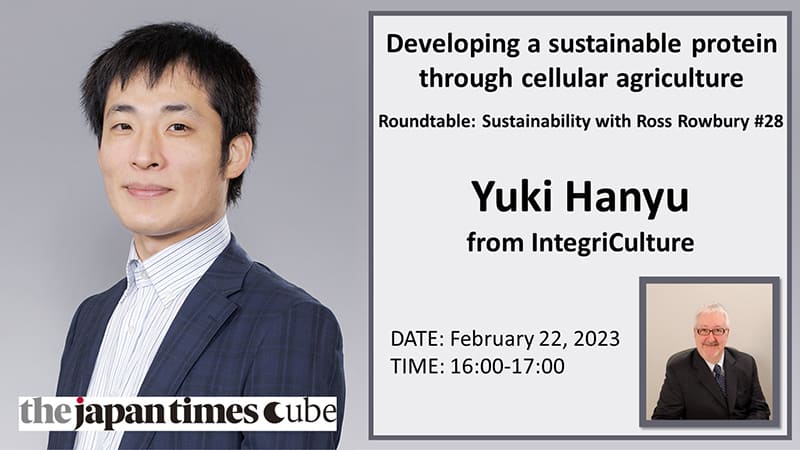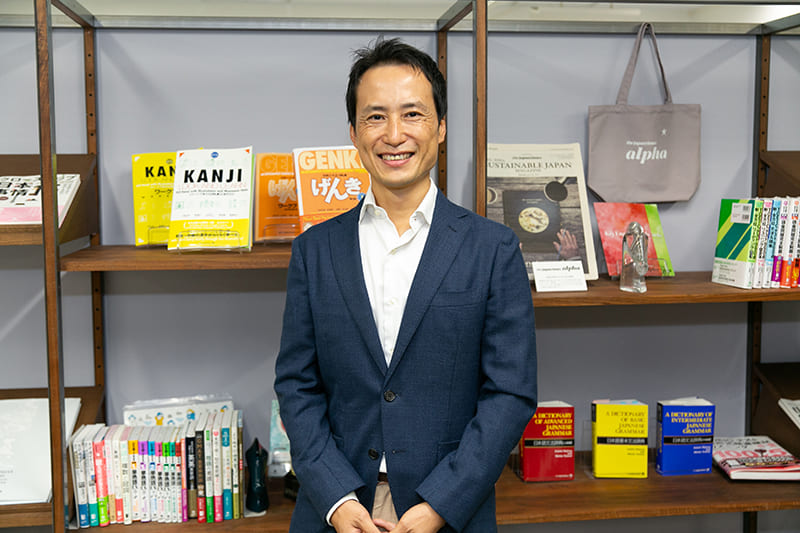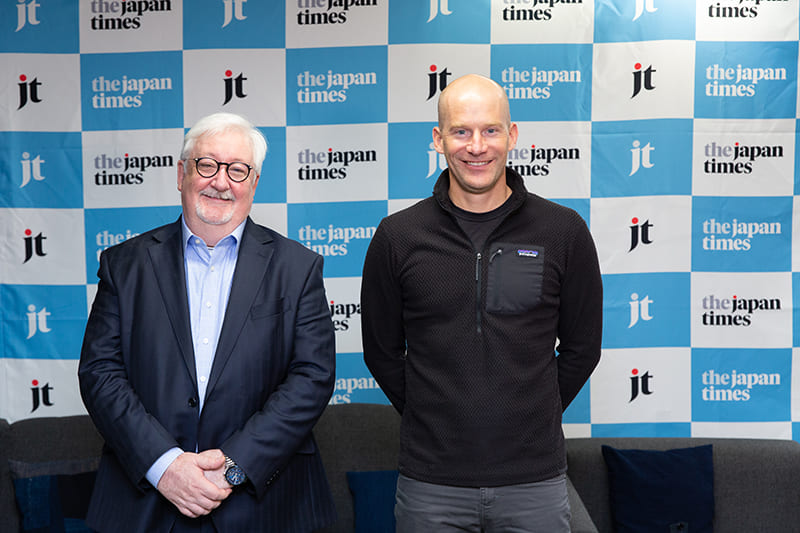March 17, 2023
Meat on Mars? Sky’s the limit for cellular food frontier
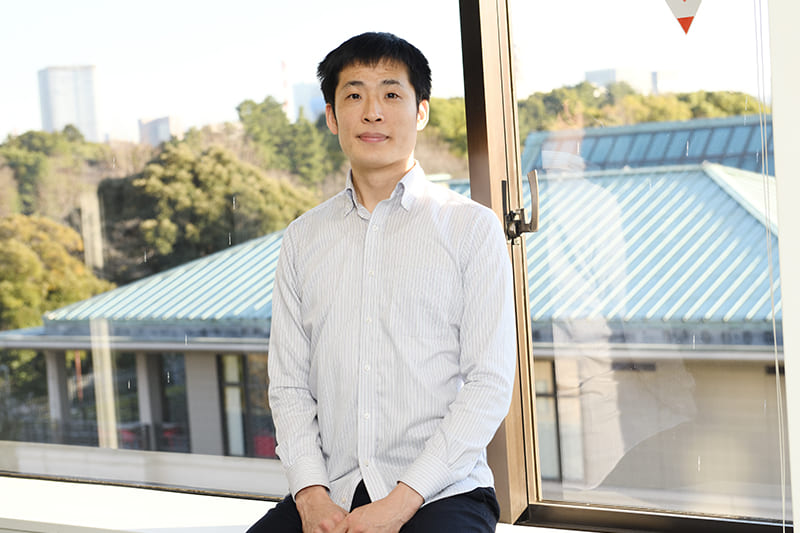
By the year 2040, Yuki Hanyu, the CEO of IntegriCulture Inc., aims to build a factory on Mars.
Leveraging his background in nanotechnology (Ph.D., Oxford University, 2010) and his work on the development of low-cost “cellular agriculture” technology, he wants to contribute to sustainability by industrializing the growing of meat from cell cultures — a process that doesn’t require herds of cattle. This technology could be a solution not only for the dietary demands of Earth’s growing middle class, but even for the space colonists of the future.
Beyond its own research and development, IntegriCulture offers a technological platform for other businesses — primarily within the agriculture and cosmetics industries — to use for their own cell-culture initiatives.
Hanyu was the guest at The Japan Times Sustainable Roundtable No. 28, hosted by Ross Rowbury, on Feb. 27.
Science fiction, or science?
Growing up, Hanyu was fascinated by science fiction as depicted in Japanese anime such as “Gundam” and “Ghost in the Shell.” Early on, he was interested in battery technology to enable futuristic societies running on 100% renewables, “but battery technology is already a reality, and I wanted to work on something even more sci-fi-ish,” he explained.
In space operas, things like cell-cultured meat are often depicted as the means by which humans in outer space derive their sustenance. “I want to make the really cool things I saw in anime and video games a reality, and cell-cultured meat seems the place to be right now,” Hanyu said, emphasizing the word “cool.” He added that he believes there is something within us that cries out for these technologies to be real, and that we actually need them. This, he said, is why they appear repeatedly within science fiction media.
One question on consumers’ minds when it comes to something like cell-cultured meat is, “Does it taste and look the same as real meat?” Hanyu said that depends on how it is made. Because the product would be identical at the cellular level, it should theoretically taste the same. However, according to Hanyu, there are many adjustments that can be made, and cell-cultured meat can take on various characteristics. “Theoretically, you can make meat that is higher in protein, or even set the appearance of the marbling to look like Pikachu!” he exclaimed.
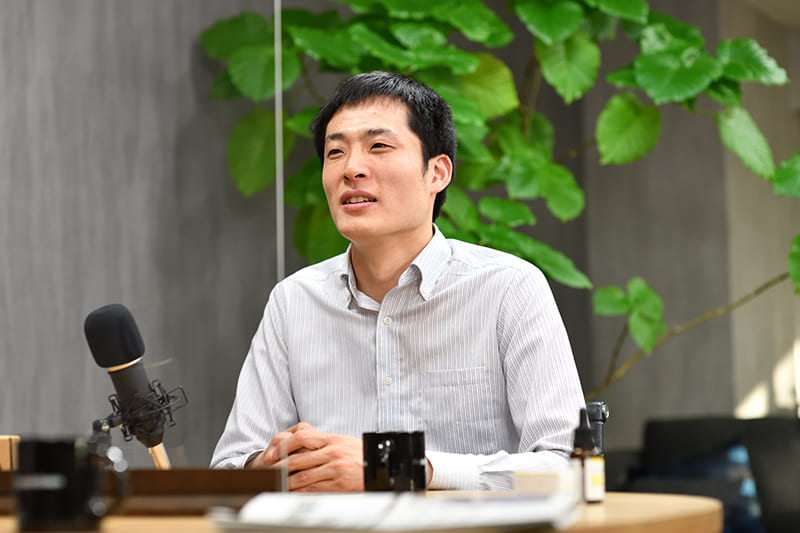
Making meat sustainable
What cell-culture technology companies like IntegriCulture do is grow cells that become the basis for agricultural and cosmetic products. Within cosmetics, IntegriCulture has a serum currently available at some skin care clinics, called Cellament, that contains bioactive ingredients. “It takes at least two weeks to make only a small amount,” said Hanyu.
Switching to agricultural products, Rowbury wondered how long it would take to make a kilogram of meat. “That depends on the process,” explained Hanyu. “Cells divide every day or two, so if you already had 300 tons of cell-cultured meat prepared in a big tank, you would have another 300 tons the next day. In that scenario, creating 1 kilogram would be a question of minutes.” In the long run, if the project continues without major engineering obstacles, they should be able to create a lot of meat in a very short time indeed.
The technology can also be used for poultry or even fruits and vegetables. “It’s basically like growing a peach without a peach tree,” Hanyu said with a laugh. Of course, to create cell cultures in the first place, live cells need to be acquired from an animal or plant. The cells then need to be given the proper nutrients (cell medium) and environment in which to grow, but once the process starts, cell division takes care of the rest. At the end of this process, you are left with a slurry of cells that can be formed into more aesthetically pleasing forms in a process known as tissue engineering. “To be honest, tissue engineering technology is not there yet, but it is being actively researched for not only cellular agriculture, but also regenerative medicine.”
How does cellular-based agriculture contribute to sustainability? Increasingly, new companies and technologies have been forced to grapple with the reality of climate change and the ecological footprint that their products and consumers leave behind. The conversation is especially important to have when a product is brought to market on a large scale. As the globe’s population increases, and especially as people in developing countries acquire more wealth, the demand for protein-laden diets is expanding. “In some countries,” Hanyu said, “demand for meat-based calories is likely to increase by as much as 30% over the next two decades.” This in turn will create demand for ever more land to raise cattle, taking a heavy toll on the environment. In the future, Hanyu expects that the process of producing cell-cultured meat will require far fewer resources than traditional cattle farming.
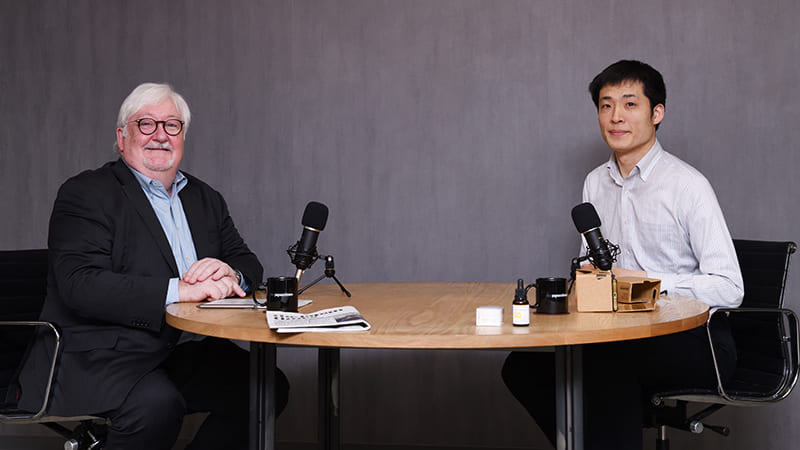
‘Neophobia’ and challenges

“The vast majority of people don’t like change,” Rowbury observed. When introduced for the first time, new technologies and products often produce backlash, sometimes called “neophobia.” Genetically modified foods, insect-based diets and plant-based meat replacements are all examples of developments in the food industry that have not been enthusiastically embraced everywhere.
Rowbury pointed out that one of the most important elements of getting the public’s acquiescence to change is increasing people’s familiarity through effective public relations. For cellular agriculture, Hanyu explained that there are many ideological connections that people might have with it already, including being driven by concern for animal welfare, sustainability or protecting the environment. Hanyu insisted that the transition toward building sustainable food supply chains has been hastened due to increased public awareness surrounding environmental issues like these.
Going forward, the industry will be faced with many challenges. Other than public perception, companies like IntegriCulture will need to comply with the food industry’s strict regulatory landscape as it relates to public health. This becomes more and more important the more the company scales up.
As for scaling, “The science and theoretical possibilities are already a reality, but the engineering to scale the process isn’t quite ready yet,” explained Hanyu. It is only a matter of time before it is ready, though, and he sees no fundamental flaws with further development. One thing that is needed are large bioreactors, each of which could hold around 200 liters of cell medium at a time.
In the wake of the food supply chain crisis wrought by the conflict in Ukraine as well as the recent inflation in food prices, countries like Japan are increasingly focusing their gaze on food security. “A lot of conflicts boil down to scarcity of food and energy,” Hanyu said. Cellular agriculture is a technology that could, if the challenges are overcome, become a scientific remedy to many economic ills and could completely change the dynamics of global society. “I think we are very close to a post-scarcity society,” Hanyu said, “which means we end up with a new problem: How do we effectively distribute abundance?”
“I’m reminded of ‘Star Trek,’ where they have a machine called a replicator that just creates food for you, so when that happens, food is no longer scarce,” Rowbury commented. “It’s absolutely fascinating to me to witness what was once science fiction becoming reality.”

